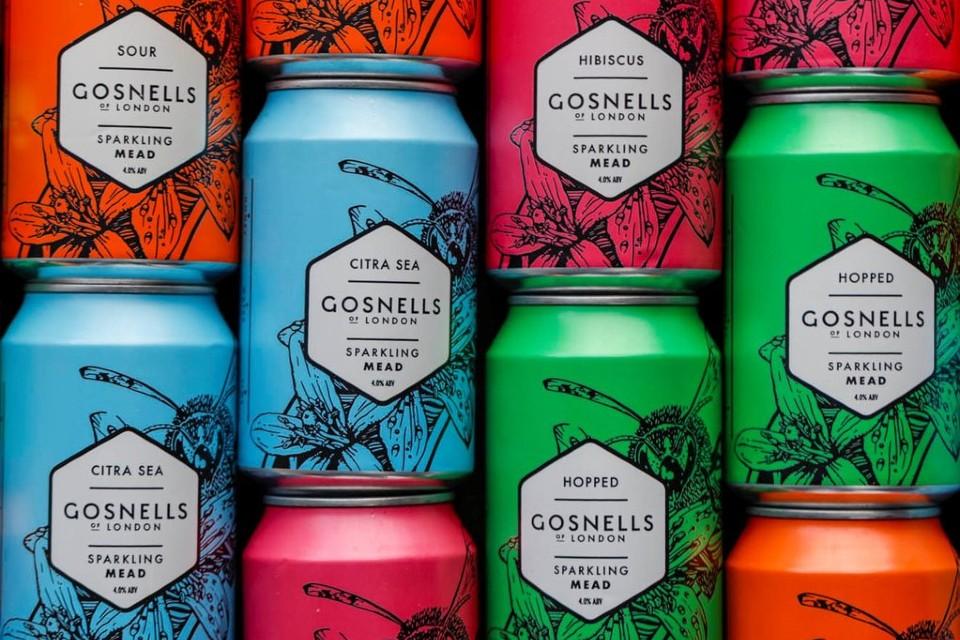‘The years have passed like swift draughts of sweet mead in lofty halls beyond the West’ - Lord Of The Rings. The mere mention of the word Mead conjures up visions of an ancient alcoholic drink that’s found in the likes of Harry Potter, Hobbits and even Game Of Thrones. Mead has a long history stretching back through the ages and one linked to various mythology and ancient cultures.
The Ancient Greeks call it the nectar or ambrosia of Gods as it is believed to be the drink of the gods and therefore possesses magical powers. It is also the world's oldest recorded alcoholic beverage. It is thought to have been discovered in Africa by accident many thousands of years ago. If you take honey from a hive, particularly early in the season when there is still rainwater in the beehives, the honey won’t be preserved.
The honey then starts fermenting due to the wild yeasts that gets in there and this will produce an attractive and intoxicating sweet−tasting drink for unsuspecting hunter gatherers. Archaeologist have uncovered evidence that goes back 10,000 to 12,000 years that people in Africa and China were fermenting honey for thousands of years.
Over time, meads were flavoured with different herbs, particularly in England and Wales, where the drink was also used for medicinal purposes. Mead was often made in monasteries during medieval times. However, with beeswax needed for ceremonial candles, honey became less available and more expensive, so ale and wine offered more viable alternatives.
The crux point was when the Normans in 1066 came in & conquered England. The Norman aristocracy brought in their own alcohol traditions which was mainly, cider and perry, fruit wines and grape wines. So when the rich people in society are drinking something quite different, that then filters down through society and it marginalises mead as sort of a lower end, more rural country type of drink. Over time the introduction of other alcoholic drinks that last longer and cheaper to produce resulted in mead being displaced as an alcoholic drink of choice by the masses.
Good news is there is now a resurgence of mead−making in the modern era. One of the most innovative of current wave of young mead makers is Tom Gosnell, owner and founder of London's only meadery, Gosnell’s Mead based in Peckham. Tom chanced upon mead making on his trips to US where after visiting lots of great East Coast crafter breweries, he found out about mead’s revival and decided to try brewing it in London.
Gosnell’s mead is made from Spanish Orange Blossom Honey, which is mixed with water and a Pilsner yeast. This is then fermented for around a week. When it’s reached the right sweetness it is then hand-bottled, pasteurized and labeled on-site in the Peckham meadery. To put a twist on the traditional drink, they made it 5.5% ABV – like a beer or cider – and lightly sparkling. It’s also much drier and more refreshing than traditional mead. Most people who’s tasted Gosnell mead compare it to a medium dry cider or sparkling wine.
For those who had not tried Gosnell mead before, it’s a light, refreshing drink with a honey flavour, that’s perfect for a hot day. It has a touch of sweet sugars and is floral on the nose, with a pale straw colour and the presence of small bubbles. On the palate, you can pick up a faint citrus and yeasty notes along with lively small bubbles. The sweetness of the honey rounds it out to a full, crisp and refreshing finish. The Elderflower Gosnell mead I had was a combination of Gosnells’ crisp, contemporary mead with a delicate wild elderflower infusion creating a refreshing floral take on their classic mead. Certainly a most interesting drink to go along with my meatball stew dinner.
Do you know that mead gave rise to the word 'honeymoon', which references the ancient Norse custom of giving newlyweds enough mead to last for a month − their first moon of marriage − due to its believed aphrodisiac properties.










